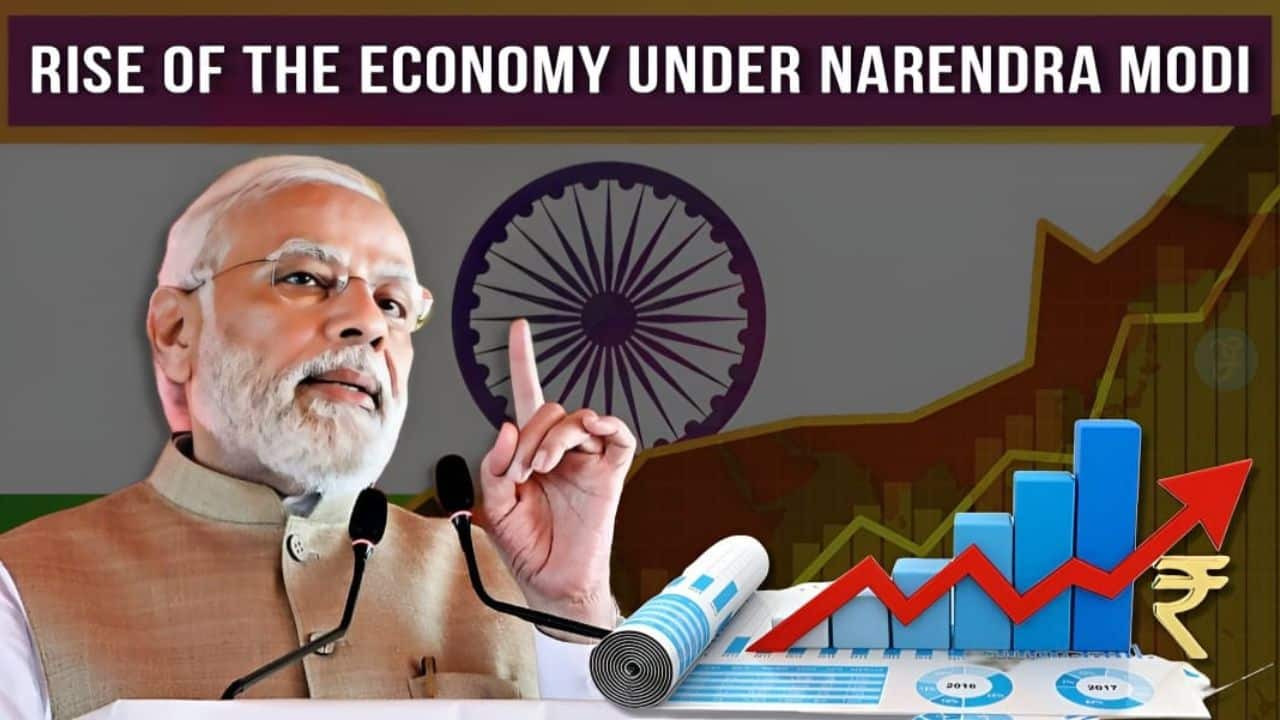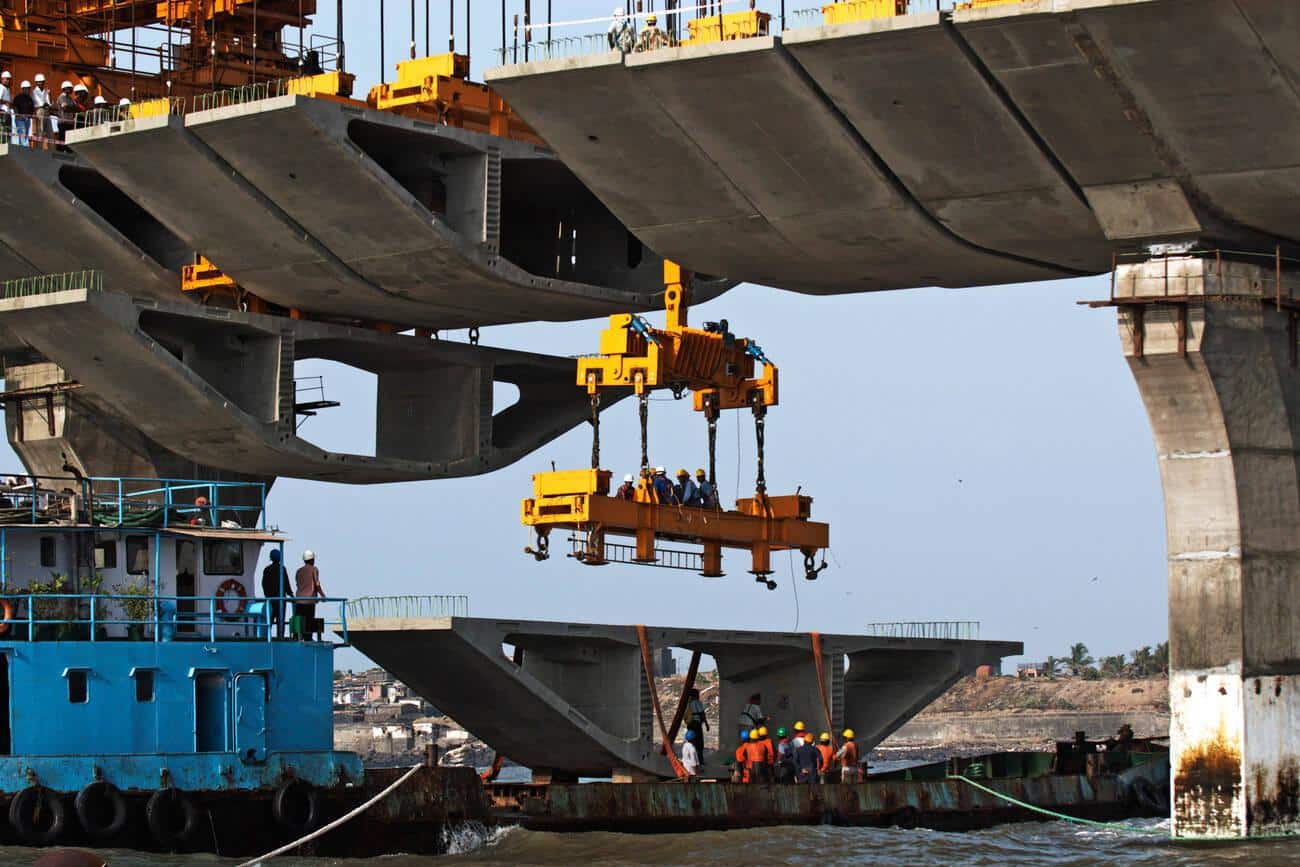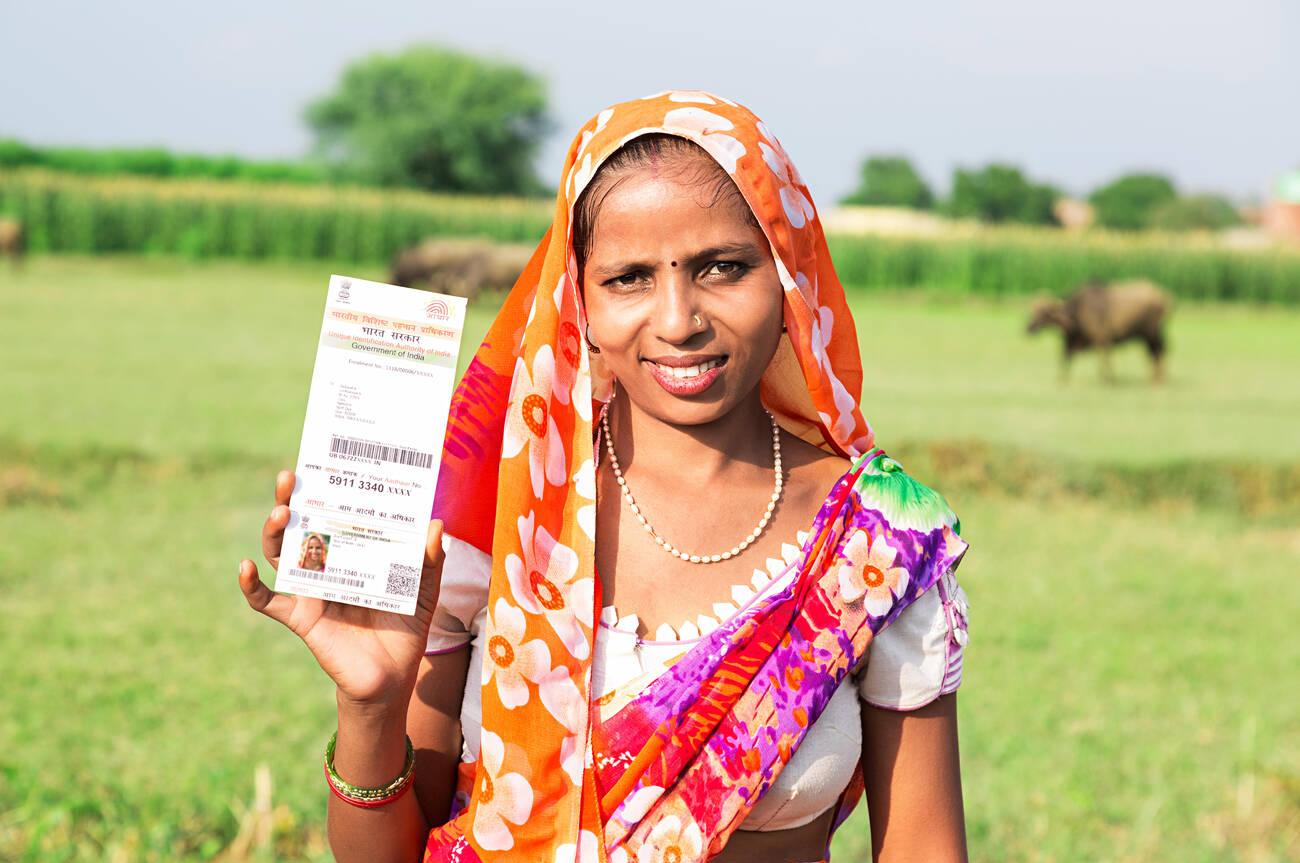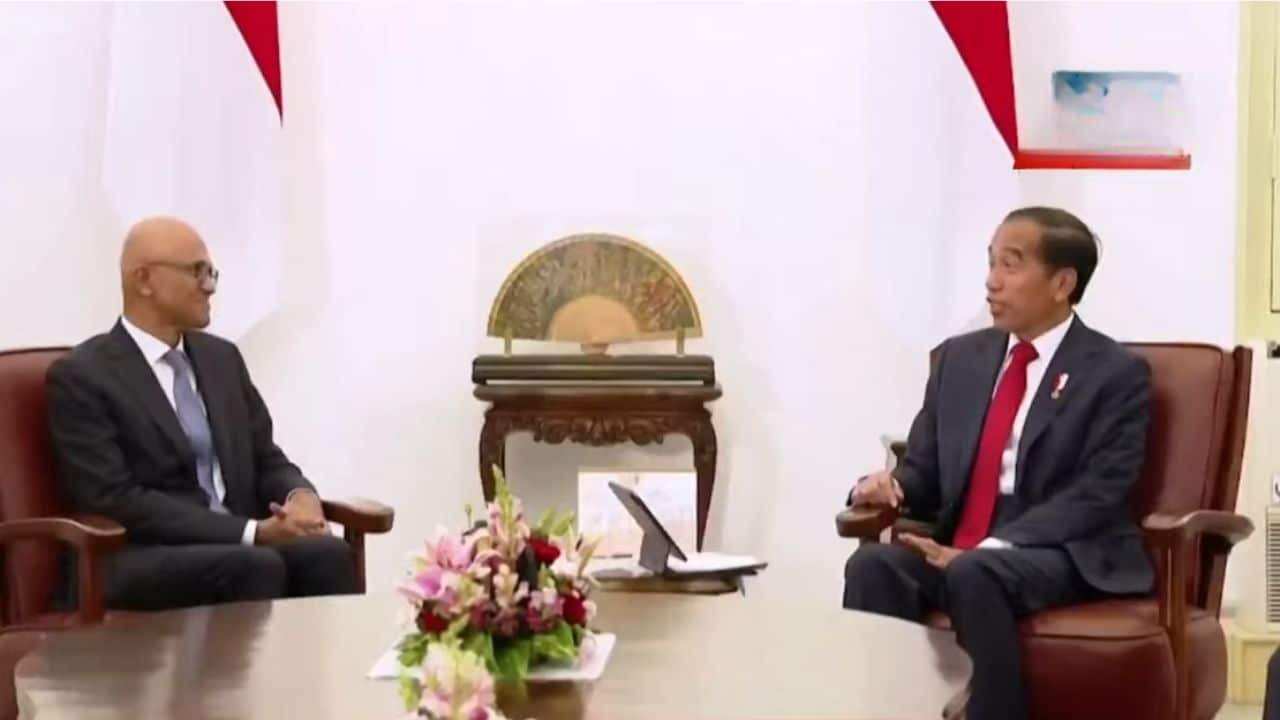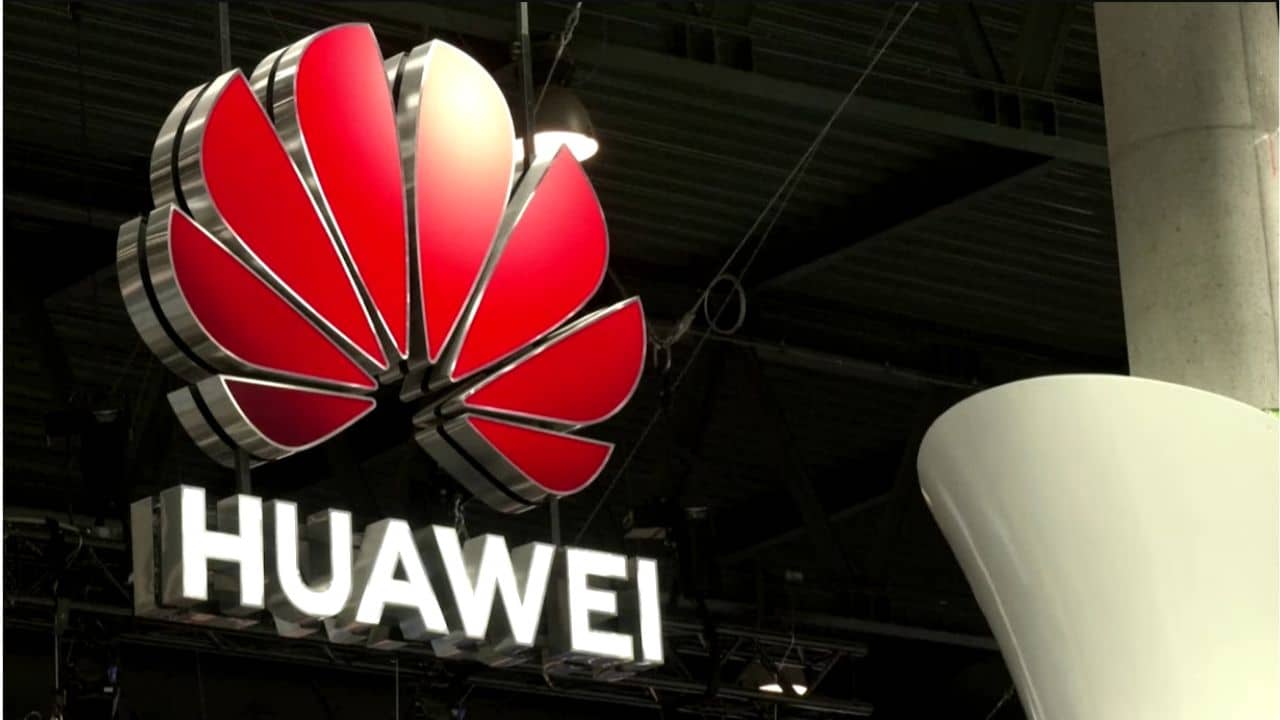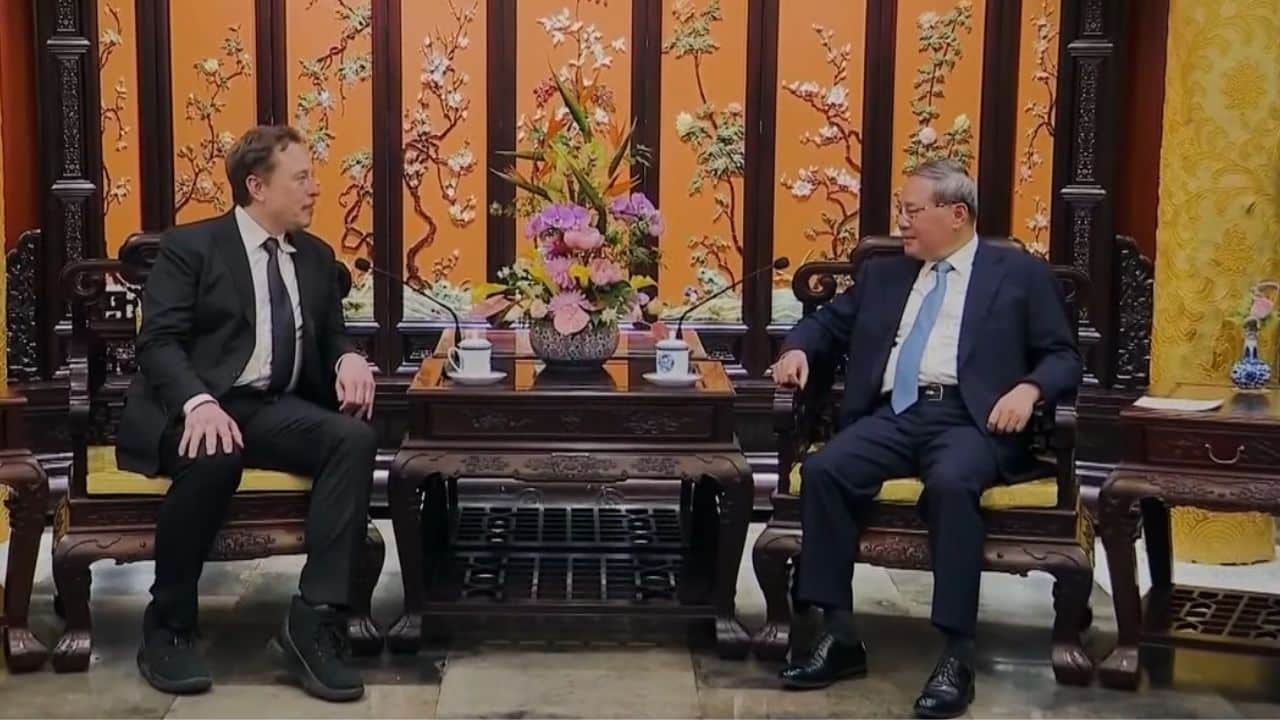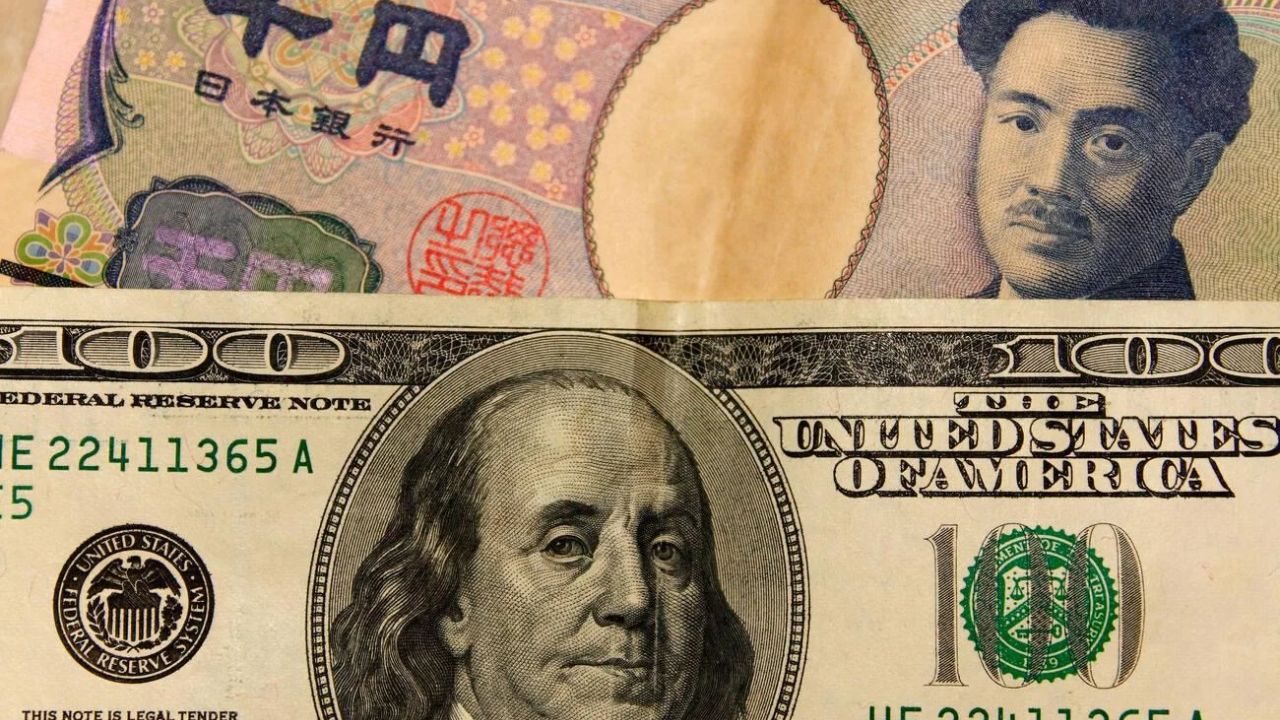Are you interested in learning more about India’s rise in the economy under Narendra Modi? Did you know India’s economy has surpassed other major economies to become the world’s fifth-largest? In this blog post, we will explore Modi’s key policies and reforms that have helped put India’s economy on a steady trajectory of rise under the India Shining campaign.
From Make in India to Digitalization, discover how his initiatives have fuelled the country’s economic progress and placed it firmly as a global player. Get ready to learn new insights into how Narendra Modi is transforming the Indian economy!
Content Highlights
- Modi’s initiatives, such as demonetization, the Make in India campaign, and the Digital India project, were aimed at improving the long-term potential of the Indian economy.
- These reforms have helped position India as a global economic power, where FDI inflows and foreign investment have increased significantly since his leadership began.
- Infrastructure projects such as highway expansion plans, smarter cities initiatives for renewable energy sources, and new waterways for trade created job opportunities while improving connectivity between rural villages and metropolitan areas.
- The government also implemented financial policies such as Jan Dhan Yojana (financial inclusion) to guarantee that citizens are part of this growth story through improved access to services like healthcare or education regardless of their geographical location.
The Rise in the Economy under Narendra Modi
Under the leadership of Prime Minister Narendra Modi, India has become one of the top three fastest-growing economies in the world, achieving a robust and consistent growth rate while overcoming previous challenges.
Overcoming previous challenges
India’s economy faced a number of difficulties prior to Prime Minister Narendra Modi taking office in 2014. The country struggled with high levels of inflation, fiscal deficits, and slow growth rates, leading to stalled investment and job losses.
In order to address these issues, the Modi government implemented a range of economic reforms such as demonetization, GST structural reform, Make-in India program, and other digital initiatives – all aimed at boosting the Indian economy.
These policies have had mixed short-term impacts; still, there is evidence that, over time, they are beginning to contribute towards greater economic stability for the long term. Demonetization was instrumental in bringing about transparent and digitized financial transactions, while GST introduced uniform tax deductions across different states, which facilitated companies’ ability to do business more fluidly in multiple locations within India.
Programs such as ‘Make in India’ encouraged foreign investors by creating favorable conditions for them. At the same time, ‘Digital India’ also focused on improving infrastructure, enabling faster access to digital information services nationwide.
As a result of these corrective measures that were taken in quick succession – despite criticism from some quarters – the country has been able to recover significantly from its pre-Modi state and maintained an appreciable rate of economic progress since then.
Achieving significant growth
Under Prime Minister Narendra Modi’s tenure, India has seen remarkable economic developments. In his first year in office, the GDP growth rate surged to 7.5%, making it the fastest-growing economy globally and displacing China as one of the world’s leading economies.
The government implemented a number of policies and reforms that were essential for this surge in GDP growth, including demonetization, Goods and Services Tax (GST), the Make in India campaign, the Digital India project, etc., that aimed at improving ease of doing business in India by minimizing bureaucratic red tape.
Further investments have been made towards developing infrastructure with a focus on transportation networks such as Railways and highways expansion, Renewable Energy sources development for the Smart Cities Initiative, etc, which has helped create improved employment opportunities across the country while also boosting the manufacturing sector throughout India directly resulting in significant rise to State revenue.
Also, FDI inflow rose 40% during Modi’s mandate due to positive overseas sentiment being generated from Indian government initiatives such as the ‘Digital Payments Revolution ‘Jan Dhan Yojana’ increased flows of foreign capital, further bolstering overall economic activity.
Read More: India to Become Economic Powerhouse in Coming Decades: PM Modi at BRICS Business Forum
Positioning India as a global player
Under Prime Minister Narendra Modi’s leadership, India has become a major driving force for global economic growth and is now viewed as a rising power on the international stage. Modi has implemented several policies that aim to modernize India in order to make it more competitive in the global economy.
Demonetization government initiatives such as Make in India and Digital India have transformed the country into an attractive destination for foreign investment. This shift can be seen in how FDI inflows into India increased by 50% from 2017-2018 alone, reflecting improved confidence among overseas investors in this rapidly growing economy.
At home, Modi’s push towards greater financial inclusion through campaigns such as Jan Dhan Yojana combined with progress on infrastructural development have created numerous additional opportunities for business owners and entrepreneurs across all sectors of Indian society, contributing further to its ascending role on the world stage.
Key Policies and Reforms
During his tenure, Narendra Modi has sought to implement numerous key policies and reforms, such as Demonetization, Goods and Services Tax (GST), Make in India and Digital India initiatives.
Demonetization
Under the guidance of Prime Minister Narendra Modi, India implemented a major economic policy – demonetization – in November 2016. The goal of this bold move was to eliminate illegal funds from the economy by withdrawing high-value currency notes from circulation and replacing them with new ones.
As part of demonetization efforts, the Indian government promoted digital payments and encouraged citizens to use Aadhar cards for financial transactions. Though initially touted as a great success that would help improve India’s long-term prospects, demonetization has come under fire due to its negative short-term effect on growth caused by cash shortages and issues surrounding implementation.
Despite this criticism, it is undeniable that Demonetization has made an impact in curbing corruption activities such as money laundering and the opium trade that had become rampant during previous years.
Goods and Services Tax (GST)
Introduced by the Modi government in 2017, Goods and Services Tax (GST) is an indirect tax system meant to simplify India’s taxation process. It aims to subsume around 17 different taxes into a unified structure with the help of harmonized coding across all items.
This not only helps unify different states under one taxation system but also simplifies assessment processes, making them easier for traders or individuals dealing in multiple states.
Despite its benefits, GST’s implementation witnessed many challenges due to individuals feeling burdened on account of technical issues, mono-taxed goods being put into multiple tax brackets, etc., while transitioning from state-specific taxes.
Make in India
Under the leadership of Narendra Modi, Make in India was an important policy introduced to promote domestic manufacturing across sectors such as defense, railways, electronics, and pharmaceuticals.
To attract foreign direct investment into these sectors, the Production Linked Incentive (PLI) scheme was launched to provide incentives for companies engaging in production activities in 14 key sectors.
Moreover, Made in India aims to increase job opportunities by encouraging entrepreneurship and reducing unemployment through its emphasis on small-scale and large-scale manufacturing activities and industries.
Digital India
Digital India is a key policy and reform initiative by Prime Minister Narendra Modi, established in 2015 with the aim of bridging the digital divide between urban and rural areas. This ambitious program leverages technology and digital platforms to drive government services, promote e-governance, improve connectivity, enhance digital literacy among citizens, and increase access to online services.
The goal is to transform the country into a digitally empowered society that can meet its goals of economic growth faster and more equitably than traditional methods would have allowed.
Through initiatives such as Jan Dhan Yojana (financial inclusion), Demonetization (cashless economy), Make In India (manufacturing sector), Goods and Services Tax (GST) for efficient taxation, and Digital payments revolution turning non-cash transactions easier, this campaign has had impressive results – improving infrastructure networks across the country in order to create improved quality of life for all Indians through swift access to public services such as healthcare, education etc., regardless of their geographical locations.
Infrastructure Development
Under Prime Minister Narendra Modi, India has made efforts to improve and expand its transportation networks, increase renewable energy sources, and implement the Smart Cities initiative.
Improving transportation networks
Prime Minister Narendra Modi’s government has made major investments in modernizing India’s transportation networks. The focus on improving infrastructure, such as roads and highways, bridges, and tunnels, is expected to help the Indian economy grow.
Investments in infrastructure are hoped to create jobs, ease traffic congestion, expand trade opportunities, and bolster the country’s international reputation.
Recently completed projects include highway expansion plans across India amounting to over $5 billion USD; expanding of railway networks across 1.4 lakh kilometers (over 879 miles); connecting new waterways for freight transport; creating cross-border links with Myanmar and Bangladesh; as well as increasing the number of regional airports from 397 to 581.
Expansion of renewable energy sources
Under Narendra Modi’s leadership, India has implemented stringent policies to expand its renewable energy sources and tackle climate change. A key policy introduced was the National Solar Mission 2010, which set a target of 100 GW of installed solar capacity by 2022.
To achieve this ambitious goal, the government has created tax exemptions for renewable energy developers, provided financial incentives to consumers who install solar systems on their roofs, and removed regulatory restraints on new project development.
This is in addition to initiatives like Make in India and Digital India, which have helped spur investment in renewables from domestic companies and foreign venture capital firms and multinationals.
Adani Group, a leading infrastructure company in India, has been at the forefront of these efforts – investing heavily in solar power projects across multiple states since 2018. The results are already evident, with wind capacity tripling since 2014 while solar has grown nearly six-fold over the same period.
Renewable energy investments can do more than reduce emissions; they can still open up job opportunities for millions of Indians while also establishing economic stability through greater energy independence.
Smart cities initiative
The Smart Cities Mission launched by Prime Minister Narendra Modi in 2015 aims to improve the quality of life for people and drive economic growth in India. One aspect of this project is to develop 100 smart cities throughout the country, addressing a range of challenges posed by rapid population growth.
These new urban spaces are looking to incorporate green and high-tech initiatives so people can have more efficient, sustainable living conditions. Already, 14 projects have been initiated in Pune, with an additional 69 works taking place all over India.
The mission’s main objective is to bring about urban development while providing better quality lives for Indians nationwide through improved transport networks, renewable energy sources, and increased technology utilization.
Foreign Direct Investment (FDI)
Under Modi’s leadership, India has sought to attract foreign investment and strengthen economic partnerships both domestically and abroad in order to boost manufacturing output and create more jobs.
Attracting foreign investment
The Indian government has made significant efforts in recent years to create an environment that is attractive to foreign investors. These efforts have included introducing investor-friendly policies, improving infrastructure, and promoting the Make in India initiative.
The country’s fast-growing economy and vast youth population make it an ideal investment destination for those looking to capitalize on India’s market potential. Campaigns such as “Make in India” have also been instrumental in doubling annual FDI inflows into the country over a five-year period.
Thanks to these initiatives and widespread structural reforms, coupled with increased purchasing power among Indians, some of the world’s leading global firms are now investing heavily in India’s growth story, which bodes well for continued economic expansion.
Strengthening economic partnerships
Under Prime Minister Narendra Modi’s leadership, India has become a key player on the global stage, both economically and politically. His government has worked hard to create an atmosphere of increased investor confidence, leading to positive FDI inflows in different sectors.
The “Make in India” campaign, specifically tailored to encourage foreign investment, facilitated successful economic partnerships around the world. Since its launch in 2014, this initiative that focused on job creation as well as manufacturing and service sector growth has seen tremendous success with numerous business collaborations from countries such as Germany, Israel, and Singapore, amongst others.
In addition to this policy measure aimed at boosting foreign direct investments (FDI), Modi’s administration initiated liberalized policies for certain core areas like defense and railways, thereby allowing higher levels of investment from overseas partners into these strategic sectors.
The United States is one such partner that continues to collaborate with India, focusing substantially on technology transfers while also exploring opportunities for stronger bilateral relations within other sectors.
Boosting manufacturing and job creation
Under Narendra Modi’s leadership, India has embarked on a mission to boost manufacturing and job creation. To achieve this objective, various incentive programs such as Make in India have been implemented.
This program seeks to create an enabling environment for industrial growth by providing foreign businesses with subsidies and other benefits. The Production Linked Incentive (PLI) scheme was also launched in 2020-21 to promote investment in key sectors of the economy that are essential for economic expansion.
The PLI scheme covers 14 important industries, including mobile phone manufacturing, electronics components production, and auto & auto components production. This initiative aims to attract huge investments from global companies into these sectors while incentivizing domestic players through tax cuts and allowances, which will result in increased employment opportunities and the advancement of cutting-edge technology within the Indian market.
Financial Inclusion and Digitalization
Narendra Modi’s financial reforms have improved access to banking, digital payments, and financial services for the average person in India. Read on to find out more!
Jan Dhan Yojana
Prime Minister Narendra Modi launched the Pradhan Mantri Jan Dhan Yojana (PMJDY) in August 2014 to provide universal banking services and financial access to the unbanked population of India.
Through this program, over 500 million people have been brought under the formal banking system, with zero-balance accounts as well as access to other banking services. This has proven to be a major milestone in advancing financial inclusion across India.
The PMJDY reduced inequalities between those with and without bank accounts and facilitated the digital payments revolution through Aadhar-based payment systems and UPI transactions.
By bringing millions of people into the fold of the formal economy, it has had an extensive impact on reducing income inequality by providing opportunities for economic growth through job creation and increased productivity.
Aadhaar card
The Aadhaar card is a biometrically-secured digital identity issued to more than 1.2 billion Indians. Its purpose is to simplify the delivery of financial services and enable secure authentication for availing of subsidized government schemes, banking services and loans.
Linking bank accounts to an Aadhaar number has made it possible for the Indian Government’s demonetization efforts in 2016 and easier navigation of people across multiple databases.
For helping combat corruption by tackling black money and helping poor & marginalized citizens access entitlements without manipulation or exclusion, the Aadhaar scheme has been commended by economists all over the world.
Also Read: Economic Powerhouses 2023: Discover the World’s Top 20 Richest Cities
Digital payments revolution
Under Prime Minister Narendra Modi, India is undergoing an unprecedented digital payments revolution. The government has created a new financial infrastructure in the country to facilitate and encourage electronic money transactions.
As a result, cashless/online transactions now account for over 3% of national GDP – no small feat! The proliferation of mobile banking, online banking, digital wallets, prepaid card networks, and other services such as UPI has made it incredibly easy and convenient for nearly anyone with access to basic technology to complete financial transactions without physical cash.
Moreover, the Reserve Bank of India has been promoting fintech innovation through initiatives like ‘Digital Bharat,’ which funds startups working on affordable digital payment solutions.
This pushes traditional institutions towards modern technologies that offer cheaper alternatives for users. Furthermore, increased Foreign Direct Investment (FDI) from numerous countries is helping bolster this growth further.
Social Welfare Programs
Prime Minister Narendra Modi has implemented several social welfare programs such as Pradhan Mantri Jan Dhan Yojana, Pradhan Mantri Ujjwala Yojana, Swachh Bharat Abhiyan, and Ayushman Bharat to improve the quality of life for average people in India.
Pradhan Mantri Jan Dhan Yojana
is the Government of India’s flagship financial inclusion program, launched with the objective of ensuring that all Indian citizens benefit from the country’s growth and development.
Under this initiative, citizens can open zero-balance bank accounts without minimum deposit requirements, thus empowering them financially. PMJDY also allows minors above the age of 10 to avail of banking services, which allows many low-income families living in rural areas to access essential banking facilities such as receiving money transfers directly into their accounts or paying bills electronically without traveling long distances.
The program has made significant strides towards bringing about true economic empowerment for India by providing universal access to banking and financial services, including insurance and pension schemes, enabling individuals to realize their potential and contribute effectively towards a stronger economy.
Pradhan Mantri Ujjwala Yojana
This was a government welfare program initiated by Prime Minister Narendra Modi in 2016 with the aim of providing smoke-free rural India. With access to clean cooking fuel, PMUY aimed to benefit 5 crore households over three years.
Initially launched in Ballia, Uttar Pradesh, this scheme has provided rural households with LPG connections and subsidized refills at affordable rates. It has enabled beneficiaries living below the poverty line to experience improved health through reducing exposure to indoor air pollution caused by the burning of biomass fuels such as wood or kerosene for lighting and cooking purposes.
Its far-reaching impact is seen in alleviating poverty and providing sustainable energy solutions for women as it helped them reduce household tasks drastically while decreasing climate change impacts from decreased deforestation for fuel wood collection.
Swachh Bharat Abhiyan
was launched by Prime Minister Narendra Modi in 2014 with the goal of making India clean and free from open defecation, litter, and waste. Its key focus is on improving sanitation facilities and reducing wastage in both urban and rural communities.
In rural India alone, the campaign has significantly increased sanitation coverage since its inception due to its various initiatives, such as building toilets, providing finances for solid waste management plants, and encouraging public hygiene among citizens.
To demonstrate his support of this movement, Narendra Modi himself took part in a cleanliness drive at Mandir Marg Police Station, where he cleaned the dirt personally. The Swachh Bharat Abhiyan mission aims to tackle issues related to inadequate infrastructure for managing human excrement safely and sustainably, which can help reduce health-related costs that come with illnesses caused by poor sanitation practices.
Ayushman Bharat
Ayushman Bharat is a national public health insurance scheme introduced by the Government of India in 2018. Designed to improve access to healthcare services for economically weaker sections, the scheme aims to provide free medical services and health benefits to more than 500 million citizens.
With over 1.5 lakh Ayushman Bharat health and wellness centers established across India, this monumental initiative is believed to be the largest government-sponsored healthcare scheme in the world.
In addition to helping millions receive necessary medical attention, it also reflects Indian policymakers’ commitment to achieving universal healthcare through strategic investments in strengthening infrastructure and improving access for underprivileged communities in rural areas while promoting preventive care and disease management programs on a massive scale.
Challenges and Criticisms
[Video Credits @TheEconomicTimes]
Despite India’s recent success, challenges around income inequality and unemployment still remain. Explore more to discover the ways in which these issues are being addressed.
Here is a table showing some of the key rises and falls in India’s development under Prime Minister Narendra Modi’s leadership since 2014:
| Area | Rises | Falls |
|---|---|---|
| Economy |
|
|
| Infrastructure |
|
Questions over quality, maintenance, and viability of some projects |
| Social |
|
Cases of violence and discrimination against religious minorities |
| Digital India |
|
|
| Foreign Policy | Increased diplomatic and military engagement with the US, Europe, and Arab countries. | Tensions with China and Pakistan over territorial issues escalated. |
The table attempts to summarize some of the major economic, infrastructure, social, technological, and foreign policy developments under Modi’s term, along with both the perceived progress made and the issues/areas of concern or negative trends observed.
Income inequality
In India, the concentration of wealth in the hands of the top 1% has greatly contributed to a growing income inequality. According to a report by Oxfam, published in 2017, the richest 10% controls 80% of the nation’s wealth.
This issue is further exacerbated by disparities between rural and urban areas, where city people tend to be wealthier than villages. Despite improvements in India’s per capita income, income inequality remains a pressing issue, causing criticisms and challenges for the PM Narendra Modi Government’s flagship slogan, “India Shining.”
One such challenge lies in corrupt practices that are rampant due to unequal distribution of wealth, which have worsened under his current leadership — highlighting yet another disadvantage of not tackling this pressing socio-economic problem effectively.
Unemployment
Under the leadership of Prime Minister Narendra Modi, India’s economy has grown significantly. Still, one of the challenges associated with this growth is unemployment. Currently, 80% of India’s working population faces rising unemployment due to a lack of job opportunities.
This gives rise to the phenomenon known as “jobless growth,” where there is a growing workforce but not enough jobs for them. As such, there are currently 53 million people unemployed in India – despite most universities producing graduates each year and a large number of professionals already in the employment market competing for positions.
Unemployment remains an issue compounded by two further elements: labor force participation rate and underemployment. The labor force participation rate–the proportion of people aged 15 and above who are either employed or actively seeking employment–has fallen from 58% in 2005 to 40% currently.
Many Indians holding full-time positions also find themselves underemployed; they don’t get paid well either due to their low qualifications or because they’re forced into more menial tasks than what their degree should entitle them to do.
Agrarian distress
India has long been struggling with rural and agricultural distress, yet the situation worsened after the introduction of Narendra Modi’s economic policies. Protests have broken out in various states across India by farmers demanding relief from crop loans due to the ongoing crisis affecting their livelihoods.
In Maharashtra and Madhya Pradesh, for example, a wave of protests hit major cities as thousands demanded debt waiver and even higher support prices on products such as cotton and soybean.
Some experts criticized how Modi’s government introduced agricultural reforms with mixed implications for Indian farmers. Such historic protests point towards the agrarian crisis that has been commonplace amongst India’s farming community for years amidst corporate control over farming operations.
Implementation issues
Under the economic reforms and policies introduced by Prime Minister Narendra Modi, India has seen rapid economic growth. Still, this progress has been hampered due to various implementation issues that impact the overall effectiveness of these initiatives.
Complex regulatory requirements for businesses can lead to onerous compliance issues as well as potential tax evasion schemes. There is also a lack of transparency in tax rates, which makes it difficult for businesses and citizens alike to understand their taxes.
In addition, there are concerns about freedom of speech being suppressed to stifle opposition voices or undermine democratic values. Finally, counterfeited invoices have become a major challenge with no easy solutions due to evidentiary burdens involved with proving such fraud cases apart from creating ambiguity around the existing level of taxation structure within India.
Future Outlook and Potential
India continues to have strong economic fundamentals and immense potential for further growth while emerging as a beacon of hope in the global context.
Strong economic fundamentals
Under Narendra Modi’s leadership, India has emerged as a bright spot in the global economy due to strong economic fundamentals and reforms. In particular, off-shoring opportunities, investment into the manufacturing sector, improving digital infrastructure through initiatives such as Digital India, and transitioning towards clean energy sources have all been credited with helping to drive growth throughout Indian markets.
This allowed India to place itself between its two regional superpowers, China and Pakistan, and position itself as one of the world’s fastest growing economies. This pushed it up past traditional giants like Germany and Japan on a path that forecasts it becoming the third-largest economy behind the United States and China by 2027.
Again, these factors set an ambitious foundation for continued success in paving over previous challenges while enabling unique investment opportunities—both foreign and domestic—for multinationals interested in taking advantage of emerging market potential, making India a key player on today’s global landscape stage.
Opportunities for growth
Under Narendra Modi’s leadership, the Indian economy has harnessed its potential for unprecedented growth. India is expected to become the world’s third-largest economy by 2027, with an estimated economic growth rate of 6-6.5% this fiscal year despite a global downturn.
Modi believes in leveraging India’s strong economic fundamentals, such as investment in public infrastructure and financial inclusion, to realize these opportunities for growth.
To achieve this goal, his government has implemented several key policies that have boosted domestic manufacturing and attracted foreign investments to strengthen partnerships while creating jobs for the growing population.
Addressing challenges and improving inclusivity
Under Prime Minister Narendra Modi, the Indian economy has seen spectacular growth and is now one of the largest in the world. With this newfound economic success, deep-seated socio-economic problems must be addressed.
The government has implemented various policies and reforms to tackle these issues head-on.
To address income inequality, Modi’s government created the Dhan Yojana (Financial Inclusion Scheme), providing financial access points to every citizen via 1.5 crore bank accounts to keep their money safe without involving third parties such as informal lending networks.
Pradhan Mantri Ujjwala Yojana also provides subsidized cooking gas connections for neighborhood households, while Swachh Bharat Abhiyan has enabled 65 million households to have free toilets.
Ayushman Bharat also offers healthcare services across India primarily justified through the public health assurance scheme and RSBY (RashtriyaSwasthyaBimaYogen). The digital payments revolution brought technology accessible for all by utilizing the Aadhaar card combined with a biometric identification system, achieved massive outreach so far committed to providing financial literacy among marginalized communities apart from encouraging a digital shift in banking activities since the 2018 demonetization initiated by PM Modi’s administration.
All these initiatives are giving exact meaning to the India Shining campaign.
Frequently Asked Questions (FAQs)
If you have more questions about the India shining campaign, please check these questions and answers.
What is the meaning of India shining?
The “India Shining” slogan was used by the Bharatiya Janata Party (BJP) leading up to the 2004 Indian general elections to convey a sense of economic optimism about the country’s future. The BJP promoted the idea that India was progressing rapidly economically under its leadership. Still, the campaign slogan ultimately failed to resonate with voters, as the BJP and its allies suffered an unexpected defeat in the polls.
What is the India Shining BJP Ad 2004?
The “India Shining” campaign was launched by the ruling Bharatiya Janata Party or the Vajpayee government ahead of the 2004 general elections in India. The slogan, translated from Hindi as “India Rising,” aimed to showcase the country’s economic achievements and optimism under the BJP’s leadership. Still, the campaign’s glowing portrayal of India’s progress failed to resonate with many voters, especially poorer and rural communities who had not benefited.
What are some India Shining Facts?
Some key facts that support the notion of India Shining are rapid economic growth, large and growing middle class, young and dynamic population, strong economic fundamentals, growing investment, technological advancements, entrepreneurial spirit, government reforms, infrastructure development, and rising global influence.


